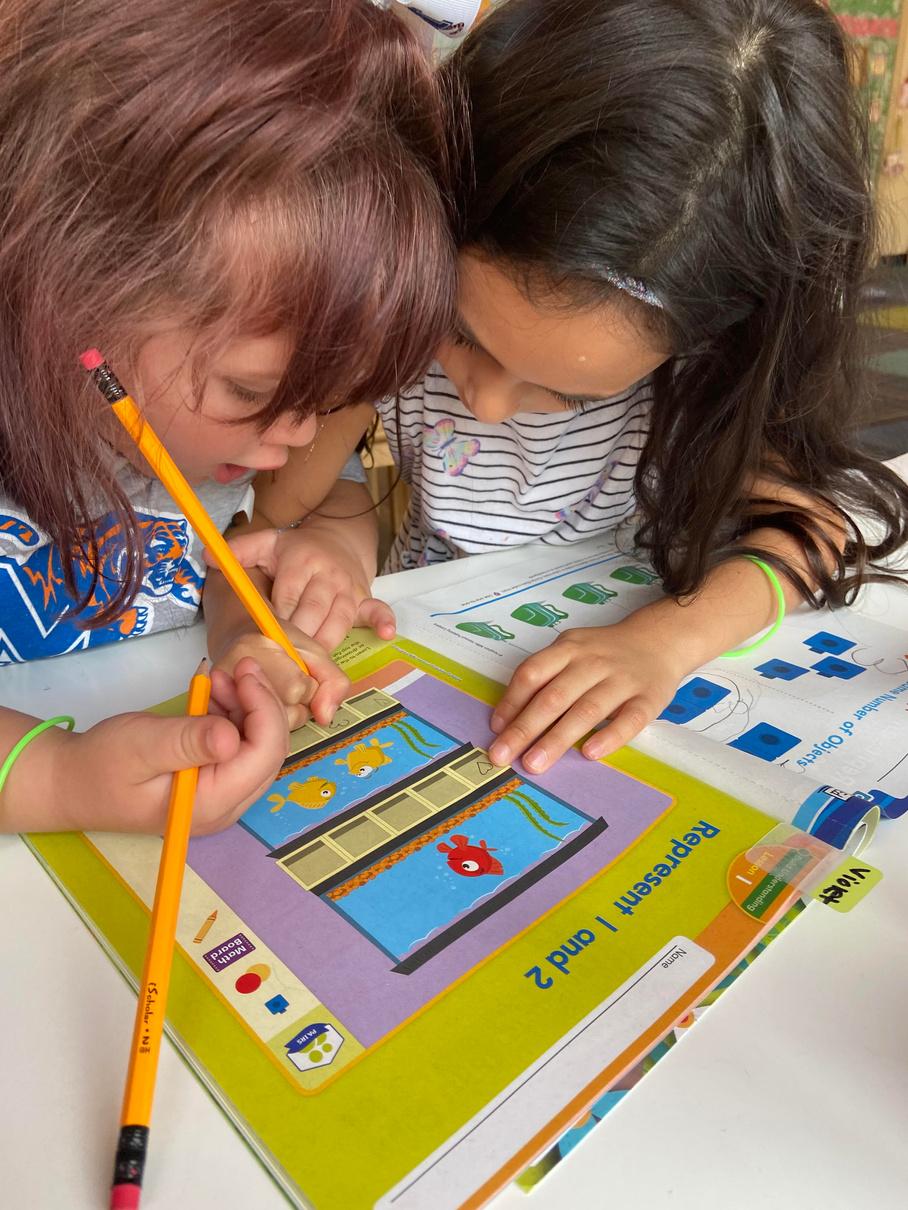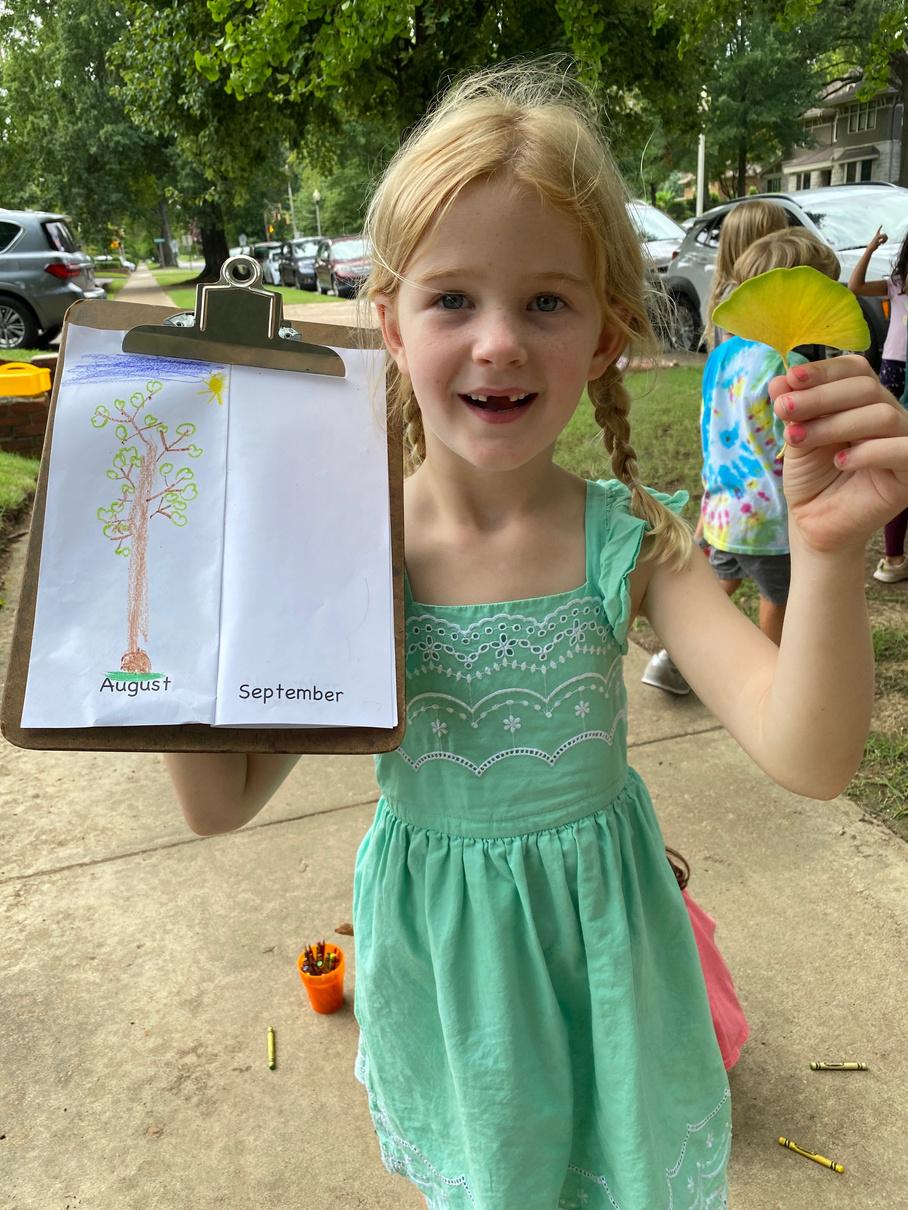SENIOR KINDERGARTEN PROGRAM OF STUDY

2023-24 School Year




Our balanced literacy program combines age-appropriate reading and writing activities, joyful language, and authentic reading experiences to help students build a strong reading foundation

Children see the diversity of our world by engaging with a wide range of engaging books, including fiction and nonfiction. SK Lukers learn to read through a combination of phonics, phonological awareness, phonemic awareness, sight words, shared reading, songs, poetry, and more! As the Senior Kindergarten year progresses, scaffolding by the teachers allows students to gradually take on more of the work in reading and writing until they are able to do it independently
Writing is explicitly taught through whole group mini-lessons, followed by plenty of time for students to apply the taught skills independently. Teachers spend time in one-on-one conferences with each student throughout the week. Students create authentic writing products, such as making their own books, writing in a journal, or writing through play by creating menus, magazines, labels for blocks, and various other writing opportunities.
Language and Literacy
Independently read grade-level books using both sight words and decodable words and be able to retell the story
Recognize sight words with automaticity and be able to use resources to spell them correctly when writing sentences
Comprehension strategies such as retelling the information, making meaningful connections, asking questions and noticing key ideas and details, and making ageappropriate inferences and predictions
Develops confidence in discussing and answering questions about the text
Find sight words in the environment and spell them correctly when writing
Write simple dictated words and sentences with the correct letter formation, capitalization, spacing, and punctuation
Start names and sentences with uppercase letters
Write upper and lower case letters legibly with fluency
Use a combination of phonetic spelling (encoding) and sight words to write simple sentences
Phonemic Awareness & Phonics
Recognize letter names and orally produce letter sounds of consonants, long vowels, and short vowels with automaticity

Decodes using phonics and word patterns
Apply writing skills through making books
Book Clubs
Collaborative discussions
Flexible small groups
Hands-on, multi-sensory approach to phonics, spelling, and sight words
Independent reading and writing
Interactive read alouds
Leadership opportunities: Present Read a wide variety of fiction and nonfiction texts
Service Learning opportunities: Yearly food drive, Thanksgiving meal for a family in need
Shared Reading
Small group instruction
Student Work Showcases: Publishing Party
Systematic benchmark assessments
Writing for an audience
Our math curriculum is hands-on, engaging, and collaborative. It is based on research and provides a spiral approach to teaching math.
Math workshops are a joyful time in our SK classrooms, where children can be found participating in activities and games that are purposeful, fun, and engage them in critical thinking skills with their classmates. Throughout the year, the SK math curriculum covers the strands of number sense, geometry, algebraic thinking, operations within base ten, as well as graphing and data.
Students learn perseverance in math and engage in solving problems accurately and efficiently, while also sharing their learning with their peers and learning from one another Math is differentiated in order to provide all learners with the small group support that they need. We also teach math in cross-curricular ways by incorporating science, technology, engineering, and art! SK children love math!

Exit Outcomes
Number Sense
Identify, compare, and order numbers to 25
Orally count to 100, and skip count by 2s, 5s, and 10s
Counts backward from 20-0
Decomposing numbers
Using subitizing and conservation strategies to compare numbers
Operations
Model and create addition and subtraction stories using concrete objects
Solve addition and subtraction problems with sums up to 10 using various strategies, such as ten frames, tally marks, and number lines
Geometry
Name 2D shapes
Describe shapes
Identify whether a shape is 2D or 3D
Analyze and compare 2D and 3D shapes
Compose simple shapes to make larger shapes
Measurement, Graphing, Data
Lead the class in calendar and weather routines, including measuring temperature, counting the days in school, comparing and graphing temperatures.

Apply basic measurement concepts such as width, length, and height
Applying math skills, such as measuring, to STEAM projects
Collaborative math activities
Differentiated small group instruction
Hands-on, multi-sensory approach to learning
Intentionally used games to develop math concepts and skills
Number talks- problem-solving conversations to articulate math strategies
Technology that supports individualization
100th day of school
In Senior Kindergarten, students experience music through speech, singing, movement, and playing instruments. Musical contrasts such as high/low, short/long, and fast/slow will be discussed. Students will begin to develop their singing abilities through simple songs and games. Movement, such as folk dancing, will be used to help students develop a sense of steady beat and reinforce musical concepts. Kindergarteners will also learn the basics of rhythm. Over the course of the year, students will learn about the four instrument families and the instruments that make them up.
Sings alone and with others using good vocal tone
Plays percussion instruments with proper technique
Imitates simple rhythmic and melodic patterns
Demonstrates the difference between beat and rhythm
Performs using musical contrasts such as high/low and loud/soft.
Identifies orchestral instruments by sight
Reads iconic notation in preparation for traditional notation
Listening to/singing/playing a variety of music
Engaging in creative movement, rhythmic movement, and folk dances

Playing instruments: rhythm sticks, hand drums, xylophones, etc
Performing body percussion
Learning simple songs and rhymes
Following nonverbal cues from a conductor
Performing in front of an audience
Through a year-long study of a schoolyard tree, students are encouraged to explore the natural world through the lens of a tree. As students visit the same tree each month, they begin to ask questions about changes in the tree and make connections to the world around them. Then, they go back into the classroom to find answers to their curiosities about trees, the seasons, weather, and animals through hands-on STEM and arts-based activities.
Understands the changes of the seasons by following a school yard tree Compares and classifies living and nonliving
Uses the 5 senses to identify seasons
Asks questions that demonstrate curiosity and understanding of scientific concepts
Makes connections between nature and the world in which they live
Monthly visit to Joe the Ginkgo Tree to draw the tree and discover seasonal changes

Hands-on, multi sensory approach which includes songs and fingerplays, experiments, construction, and artsbased projects
Creates simple models to illustrate scientific concepts
Designs and engineers prototypes using recycled materials
Draws using a “scientist’s eye”
Incorporates technology to support learning
When children are exposed to other languages at a young age they will be more likely to be interested in learning it as they grow older, also it helps expand their world and become more aware of other cultures and diversity. Students will begin with greetings, verbs Soy & Estoy, numbers, and colors. We will then progress to days, food, likes and dislikes, Navidad, months, opposites, transportation, and clothing. Spanish class will also incorporate seasonal vocabulary, geography, art, music, customs, and food from Hispanic cultures.
Exit Outcomes
Builds basic Spanish vocabulary by learning the Spanish alphabet and the sounds of the letters

Integrates content learning through multimedia, singing, dancing, games, and storytelling
Participate in authentic songs and games
Explores Hispanic culture and traditions
Experiences that Support Learning
Hands-on, multi-sensory approach
Shared Reading
Interactive Read-Alouds
Modeling
Matching games
Role Playing
In Senior Kindergarten, we use a wide variety of award-winning books to explore children’s literature. Using the Whole Book Approach, students will learn to identify basic parts of a book, with special emphasis on observing and thinking about the role of illustrations Students will learn about the jobs of authors and illustrators They will also learn to identify the main characters, the setting of a story, and learn to distinguish fiction from nonfiction books. During book readings/discussions, students will predict outcomes, draw conclusions, and demonstrate sequencing of events. Students will demonstrate good listening skills, participate during class, and practice proper book care. At the beginning of the year, children check out books to keep in the classroom. Midyear, children will begin to check out books to take home.
Develop a growing interest and joy in children’s literature
Increase awareness of why Formative Five traits are important
Expand awareness and respect for others through literature
Identify the basic parts of a book
Understand the different roles of the author and illustrator in creating a story
Grow an awareness of a story’s main characters and setting
Distinguish between fiction and nonfiction
Expand abilities to predict outcomes, draw conclusions, and demonstrate sequencing of events
Grow listening skills in group settings
Learning the locations in the library of fiction and nonfiction books for the SK grade level
Learn how to check out books from the library
Learn how to properly take care of books that are checked out and how/when to return books
Class read alouds each week
Sharing books from diverse authors and illustrators with students
Monthly focus on a specific Formative Five trait (empathy, self-control, integrity, embracing diversity, and grit)
Weekly class collaborative discussions related to book readings
Weekly hands-on opportunities to explore the sections of the library from which SK readers select books
Librarian-student collaboration on books selected weekly by students
Weekly checkouts of books to read in the classroom and at home with families, with an emphasis on reading for joy and engagement
Incorporation of monthly DEI books to support awareness of others’ cultures, experiences, and contributions to the world at large
Kindergarten art is an introduction to the art elements of line, shape, color, texture, design and form. We explore all kinds of art media: watercolor and tempera paint, clay, paper mache, collage, and more. Children begin to learn basic drawing skills and assembly skills and see examples of art from many cultures and styles. Children come once a week for 45 minutes. Our expectation of children is that they do their best and that they respect the materials in the art room and each other. The goal is for every child to gain art making confidence and skill, and learn to love creating.

Students are comfortable navigating the art room, aware of proper use of materials including how to hold a pencil and brush, use glue, and respond at clean up time
Recognizes art elements in their own works and other works of art - Line, Shape, Design, texture and color
Understands and can identify basic art color theories such as primary colors and mixing of secondary colors
Observe texture in relationship to nature and in art
Recognizes, draws, and cuts out shapes and sees how shapes create objects
Is introduced to the shapes in a face and a figure
Recognizes line diversity
Is introduced to the design principles of symmetry
Understands the difference between object and background
Demonstrates the difference between abstract and representational art
Understands that different artists work in different styles and is introduced to a variety of artists from different cultures
Creates artwork with varied materials/techniques: painting (watercolor and tempera), drawing, oil pastels, clay, paper sculpting, collage
Hands on art making experience in every class
Inclusion in all projects the students freedom to create individualized expression and content within the boundaries of the objectives of an assignment
Examples and discussion about artwork showing different styles
Examples and discussion about artwork from different countries and cultures
Modeling/demonstration of technique and correct usage of various materials
Modeling/demonstration of how to identify and pick out shapes to draw objects
Modeling/demonstration of Symmetry
Modeling/demonstration drawing of a face
Modeling/Demonstration drawing of a cylinder shape
Praise and use of examples of artwork of classmates
Use of examples of artifacts (for ex Masks from all over the world)
One on one dialogue and help as needed with students to determine their goals in art and how best to achieve them
Availability of a variety of materials and visual references